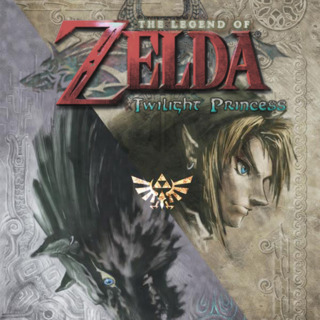Rather than pushing the series forward as a design, Nintendo focused on the tale of good versus evil.
There is once again a rescue mission to get things moving, but the game world gives it weight. Link's hometown of Ordon is a combination of small town charm and natural harmony. The hero humbly herds goats but also serves as an anchor for the other citizens. He helps his neighbors with their small problems, earns the trust of the mayor, and is a role model for the local children. This simple harmonious life is both motivation for when disaster strikes and a foundation for the land of Hyrule as a whole. On top of the usual side races such as the earthy Gorons and the fish-like Zora, human characters are designed to highlight their roles in nature. They have tribal qualities or, more humorously, take on aspects of hippie culture.
Of course, not all is right in Hyrule. An invasion of sorts is being staged by a twilight realm that serves as counterpoint. Shadow engulfs the land, leaving behind cover for the twilight beasts. Some resemble twisted versions of Hyrule creatures while others are completely alien, writhing about with tendrils flailing. The Zelda series has taken plenty of criticism for not embracing full orchestration in its music, but here the electronic score gives the twilight creatures much of their unnatural character.
Once the game really kicks off, it plays with the duality at the heart of Hyrule's struggles. Dusk and dawn linger for a dramatically long time, but the embodiment comes in the form of the new guide character Midna, an imp from the shadow realm. Link finds himself cursed in the other world as a wolf, giving Midna the opportunity to use him for her own means. She seems more amused by Hyrule's oddities than she is moved by its problems but she isn't evil. Her moral ambiguity makes her a suitable medium between both worlds and she works as a vehicle for interaction between the two. Midna and Link's partnership is a bizarre one, with Midna as the rider and a chain dangling behind Link.
Early parts of their quest aren't strong. They largely alternate between meager collection quests to dispel the shadow and then traditional dungeon exploration. The collection quests wear thin as they eliminate a lot of the mechanics (as a wolf, Link obviously cannot use a shield or practice his swordplay) and suffer from weak level design as most of the locations they take place in are ultimately meant to be either settlements or bypasses to major locations. The quest needs until after all the shadows clear to truly pick up. Later dungeons more directly explore duality, with one of the standouts being the Temple of Time as it plays with the concept of symmetry. Mirroring statues and puzzles with gigantic scales make up moment to moment play before the structure really shows itself with a clever twist.
The dungeons are well designed overall, even the ones hidden between narrow collection quest snags although those rely more on juxtaposition with the shadow world than their own merit. None of them are nearly as devious as the Water Temple in Ocarina of Time but they mostly all have the pleasing combination of putting the puzzle pieces clearly in front of the user without spelling out exactly what needs to be done. Sadly, the bosses aren't quite there. The better ones merely make sense within the context of the dungeon while others feel too much like remixes from other Zelda games.
The Legend of Zelda: Twilight Princess is a game about duality. Good and evil, harmony and disorder, dark and light. Its storytelling is certainly strong. While it still makes for a great game, what makes Twilight Princess fall just short of the better entries in the series is a lack of unity. In particular, it's missing a unity of storytelling and design innovations.

